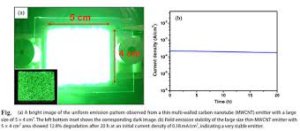

Following inhalation in mice, DNA damage increased for straight but not tangled CNTs ( 27). Regarding genotoxicity, DNA strand breaks were increased in rats by inhalation of 0.94 mg/m 3 multiwalled CNTs ( 26). Rodent inhalation of CNTs increases neutrophil numbers in BAL fluid ( 22–25). CB has been evaluated as possibly carcinogenic to humans (IARC group 2B) based on animal studies ( 21). Rodent inhalation of CB Printex-90 is associated with increased levels of DNA strand breaks in BAL cells ( 19) and in liver cells ( 11), although no effect was found on 8-Oxo-dG levels in DNA in rat lung following exposure to CB ( 20). CB Printex-90 (14 nm of diameter) has been extensively characterised ( 6, 10, 14) and has at a dose of 8 mg/kg mouse body weight (bw) by intratracheal administration been used extensively as a positive control and reference particle in the toxicological testing of nanomaterials ( 4–6, 12, 13, 15–18). These were carbon black (CB), multiwalled carbon nanotubes (CNT) and titanium dioxide nanoparticles (TiO 2). At the same time, we wanted to determine the best dispersion media to mimic inhalation toxicity for three specific nanomaterials. We aimed at assessing whether dispersion media in general influence toxicity. The latter is a potential determinant of genotoxicity ( 13). This is because the dispersion medium can participate in the formation of a protein corona on the material surface and thus influence the available surface area. been proposed that dispersion media should be tested on how they affect the genotoxic properties of the dispersed particle. CB Printex-90 has a primary agglomerate size in the micrometre range when dispersed in 10% acellular bronchiolar lavage fluid (BAL) in saline ( 4, 10), whereas 50- to 100-nm agglomerates are observed in water ( 11, 12).ĭispersion media may, however, influence the nature and severity of the toxicity. Conversely, for other materials, protein-free media may be best. These are added to decrease agglomeration size and improve stability of the aggregates for some nanomaterials ( 8, 9). Dispersion media are often based on saline containing different proteins. However, when using this administration method, a liquid dispersion medium has to be added as a carrier and dispersant. Also, it has been suggested that intratracheal instillation studies are useful for ranking and grouping of nanomaterials ( 1–7). Intratracheal instillation and aspiration are alternative exposure models often employed, as these are cost-effective, use less test material and provide safety for the staff. Inhalation in rodents is a model that resembles human inhalation. For the assessment of human toxicology, animal models are often employed to determine levels at which toxicity occurs. Humans are exposed to a range of particles through inhalation. The influence of dispersion media on nanomaterial toxicity should be considered in the planning of intratracheal investigations. Water seemed to be the best dispersion medium to mimic CB inhalation, exhibiting DNA strand breaks with only limited inflammation. In conclusion, the dispersion medium was a determinant of CB-induced inflammation and genotoxicity. No dispersion medium-dependent effects on genotoxicity were observed for TiO 2, whereas CNT in 2% serum induced higher DNA strand break levels than in 0.05% serum albumin. Increased levels of DNA strand breaks for CB were observed only in water, 2% serum and 10% BAL fluid in 0.9% NaCl. For CB, inflammation was dispersion medium dependent. Inflammation was observed for all nanomaterials (except 38-nm TiO 2) in all dispersion media. Inflammation was measured as pulmonary influx of neutrophils into bronchoalveolar fluid, and DNA damage as DNA strand breaks in BAL cells by comet assay. The dispersion media were as follows: water (CB, TiO 2) 2% serum in water (CB, CNT, TiO 2) 0.05% serum albumin in water (CB, CNT, TiO 2) 10% bronchoalveolar lavage fluid in 0.9% NaCl (CB), 10% bronchoalveolar lavage (BAL) fluid in water (CB) or 0.1% Tween-80 in water (CB). Rodents were intratracheally instilled with 162 µg/mouse/1620 µg/rat carbon black (CB), 67 µg/mouse titanium dioxide nanoparticles (TiO 2) or 54 µg/mouse carbon nanotubes (CNT). We tested whether different intratracheal instillation dispersion media influence the pulmonary toxicity of different nanomaterials. However, for this, materials are dispersed in appropriate media that may influence toxicity. Intratracheal instillation serves as a model for inhalation exposure.


 0 kommentar(er)
0 kommentar(er)
